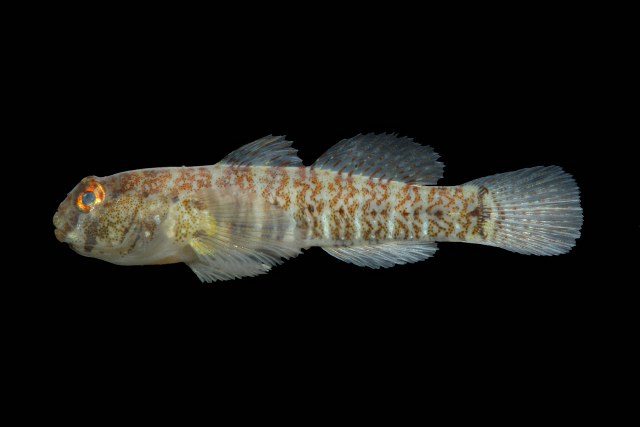| Occurs in shallow tidepools which are generally, depressions in the calcareous material with a sand and gravel substrate; tidepool edges covered by algal turf, soft macro-algae, coralline algae and a few soft and hard corals; reef surface generally flat and pools frequently interconnect with each other through both overflows and an extensive system of dissolution holes and channels. The same pools are shared, but not necessarily the same microhabitat, by sympatric gobies which include Bathygobius geminatus Tornabene, Baldwin & Pezold 2010 (most abundant), Bathygobius soporator (Valenciennes 1837), Barbulifer enigmaticus (Joyeux, Van Tassell & Macieira 2009), Coryphopterus glaucofraenum Gill 1863 and Ctenogobius saepepallens (Gilbert & Randall 1968) (least abundant). This species is not limited to the intertidal zone for underwater observations in the state of Alagoas (northeastern Brazil) at about three meters depth (low tide) showed several living on (and in) a rock outcrop located under a reef ledge (the outcrop was composed of encrusting coralline algae, interspersed with filamentous and turf-like algae). Usually, isolated (single) individuals were observed perched at the entrance of a small hole in the calcareous rock, occasionally biting at the substrate, and darting into the hole at the slightest disturbance. An individual was observed, in one occasion, chasing another, both finally entering the same hole and not reappearing during the observation period. In NE Brazil, the state of Paraíba, the species was observed in subtidal areas (about three meters depth) under a small, flat, rounded stone lying on top of a flat clay substrate and upon lifting the stone, the fish disappeared into a small round hole in the substrate. In the state of Espírito Santo, in a 15 cm deep tidepool, this species was observed entering and exiting one of the numerous holes in the clay along the side of the pool. Swimming for this species was limited to close contact with the bottom, in small (1-10 cm) darts, starting and ending in protected areas (i.e., under stones, near holes, into cavities). Also, breeding males were observed perched near holes for extended periods, moving up to 30 cm away, before entering/exiting the hole (Ref. 104557). |
